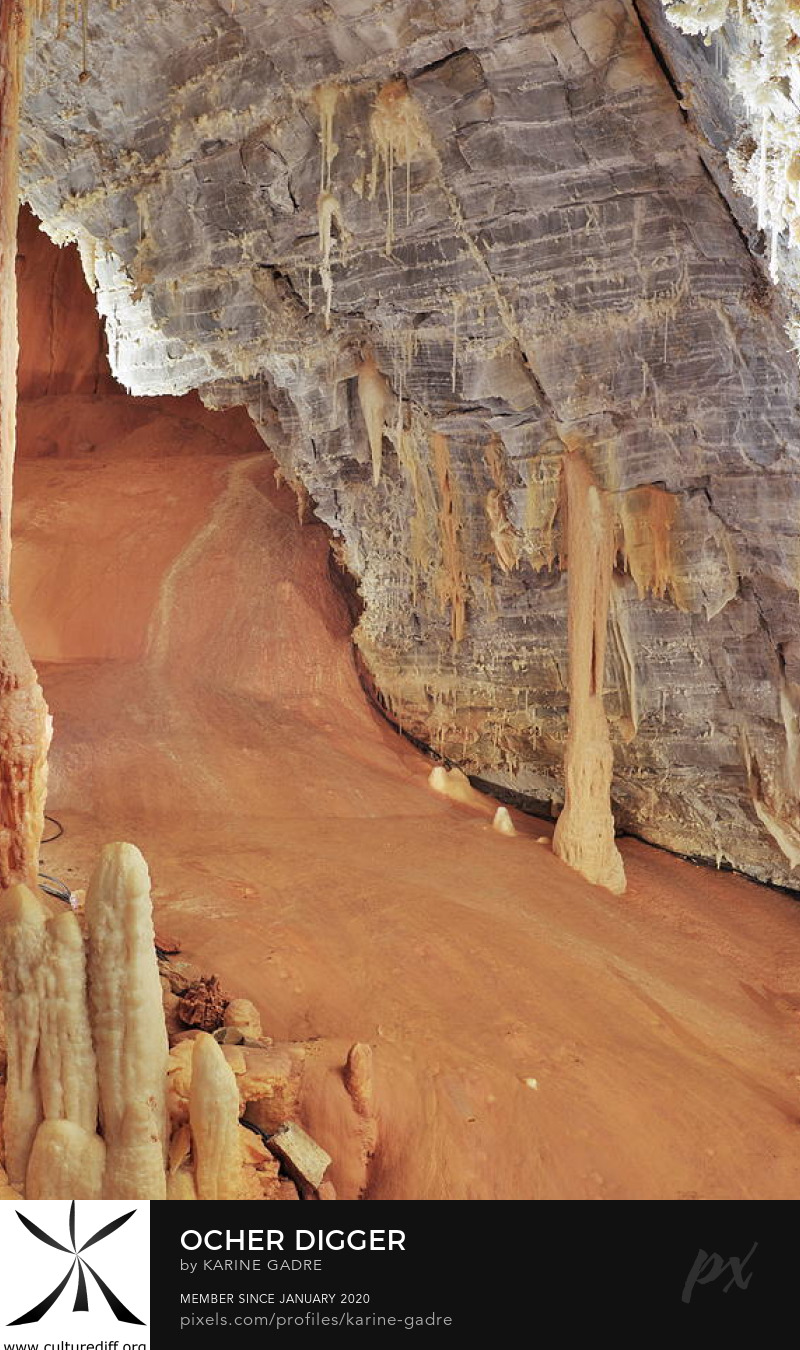Ocher Digger
Ocher Digger
The Upper Languedoc is full of underground cavities dug by water infiltration in limestone cracks of the karstic massif dating from the Devonian, i.e. 400 million years ago. Channeled through rugged geography, rainwater naturally turned into torrents that were quick to dig caves or chasms, opencast for some. Like the Giant Chasm of Cabrespine located between Cabardès and Minervois. At the origin of this vast subterranean network, the waters of the Clamoux river. Now, the river seeps just down below the village of Cabrespine then passes peacefully into the chasm about 200 meters deep, next reappears ten kilometers away at the foot of the castles of Lastours. From its former bed carved in blue marble remains a thick ocher mat littered with concretions. This natural ocher whose color is due to the presence, in the clayey sand, of hematite - or iron hydroxide, was used as a pigment by our Paleolithic ancestors. Its extreme longevity ensured that of artworks which adorn the walls of the cavities in which they lived as well as that of the paintings decorating the Venus they carved.

Information relating to this photography:
- Photographic conditions : Fuji X-E2 + Fujinon Lens XF 35mm F1.4 R - F/8 - 2 seconds - ISO 200
- Processing tool of the photography : RAW file converter EX powered by Silkypix 3.2.19.0
- Optimization of the display : 180 px/in + MozJPEG
Keywords : Cabrespine Chasm, Aude, underground river, ocher pigment, cave paintings, Palaeolithic

Print-on-demand
The partnership established with the company Fine Art America, one of the world leaders in printing technology for works of art on various surfaces (walls, clothes, decorative objects, etc.), allows the Culture Diff' company to offer you a Museum Quality printing of this photograph.
Explore the different supports, formats and printing styles available by clicking here.

Important Note: The Culture Diff' company undertakes to ensure that the collection and processing of your personal data, carried out via the www.culturediff.org portal, comply with the General Data Protection Regulations (RGPD) established on 25 May 2018 and the Data Protection Act of 6 January 1978. When transmitted to the Culture Diff' company, your personal data (first name, last name, postal and electronic addresses) therefore remain absolutely confidential. In addition, the Culture Diff' company has joined the PayPal payment system, so that your payments by credit card or PayPal account benefit from the highest security.

